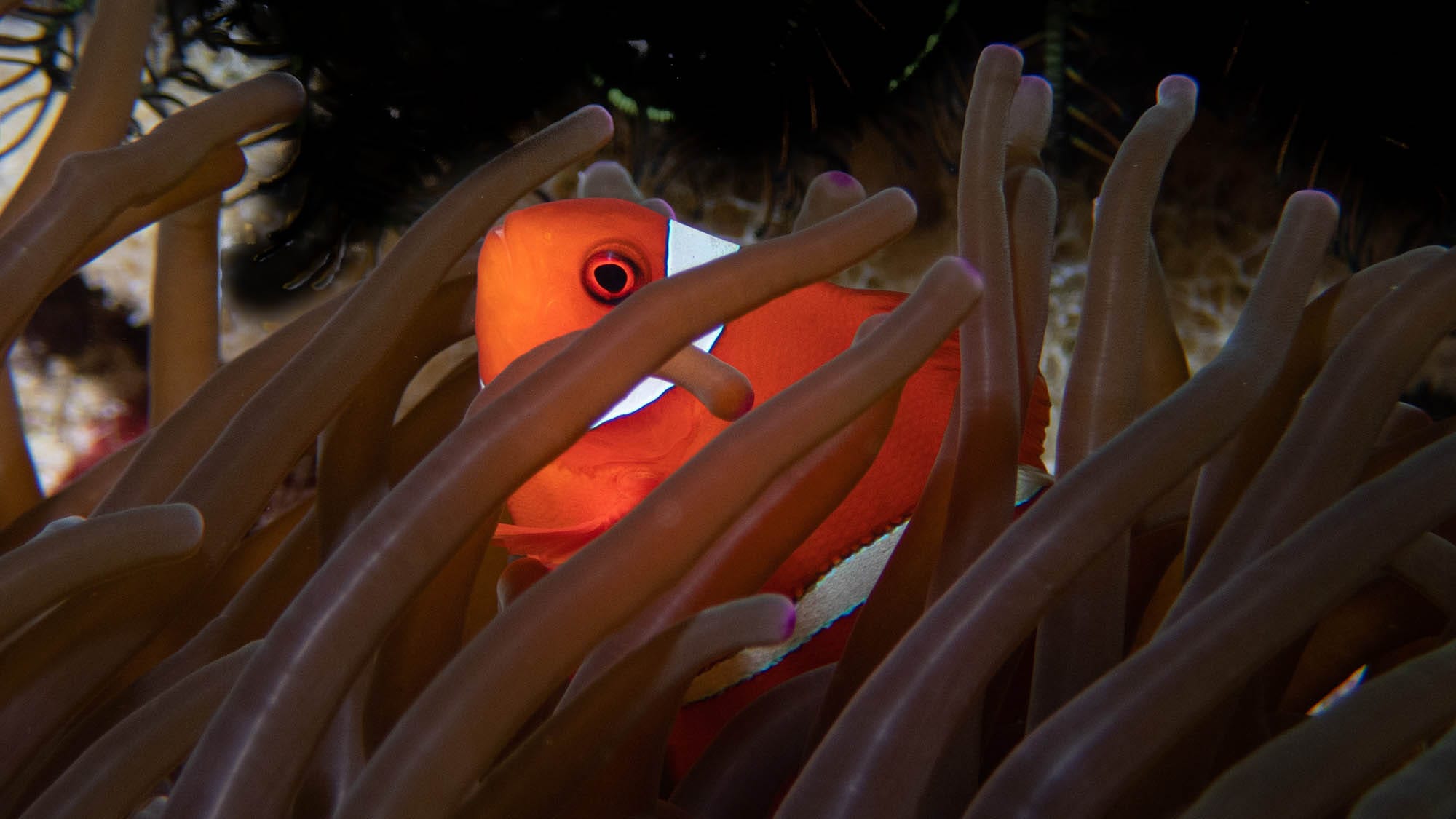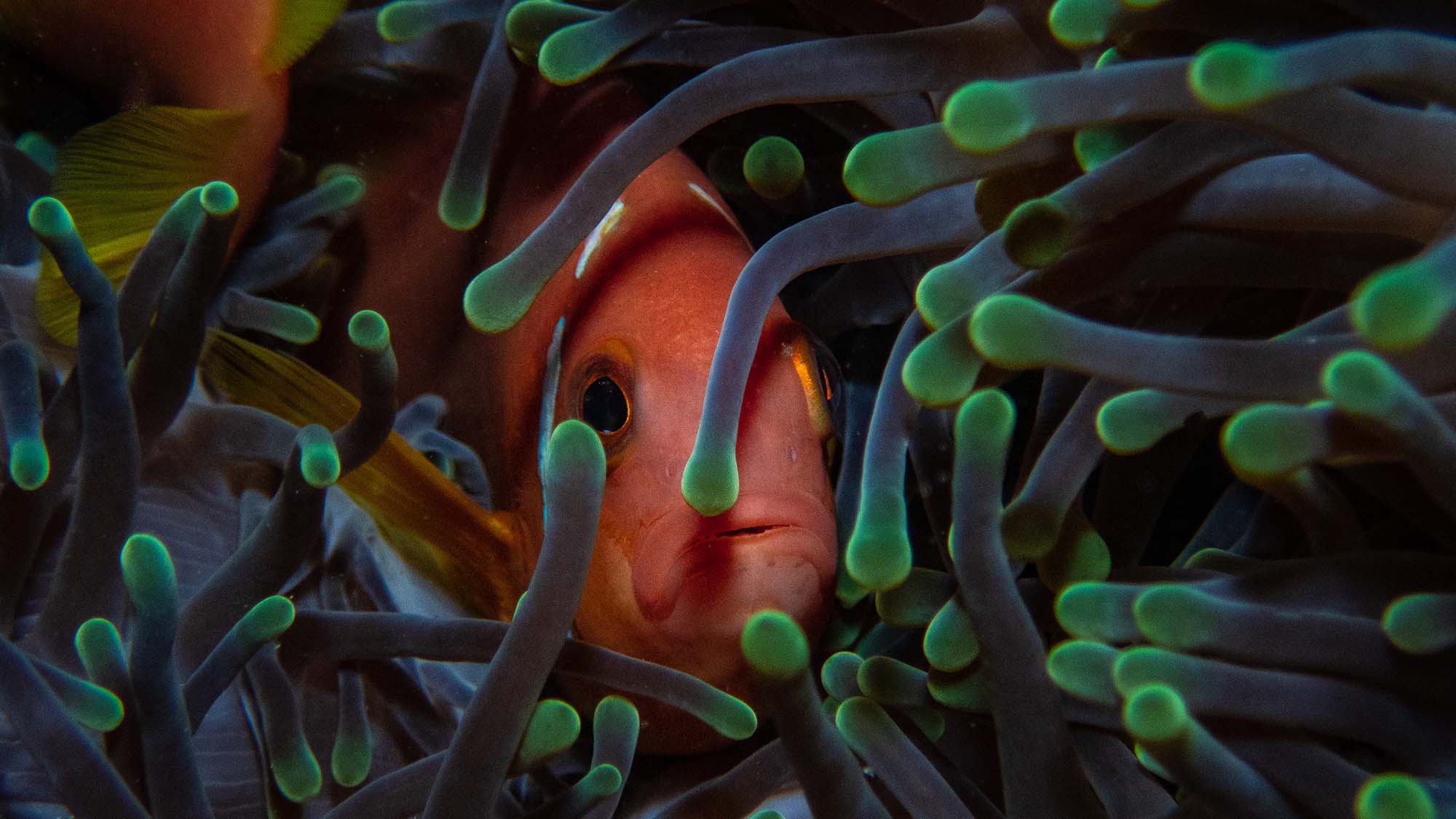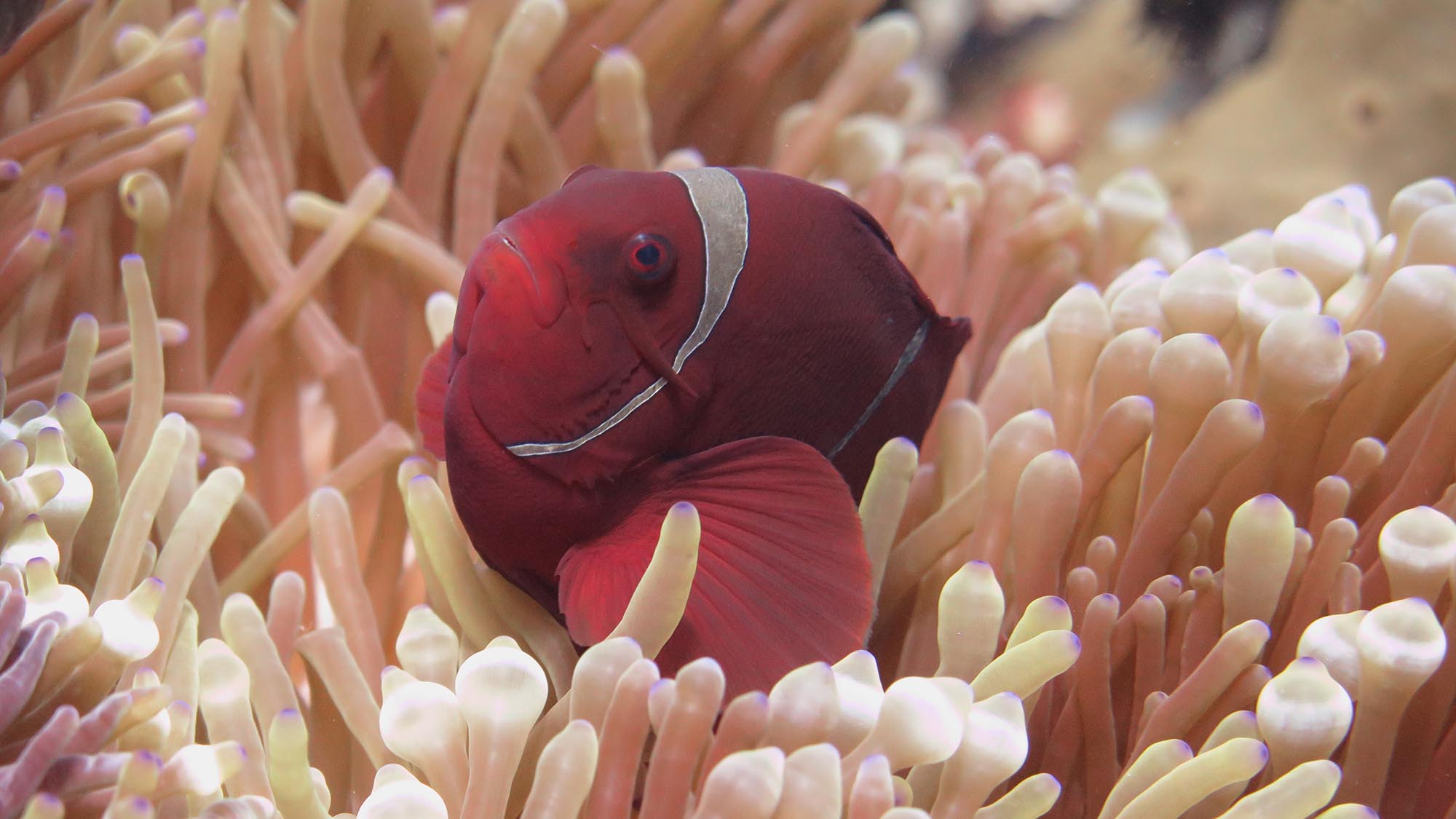The Clownfish
If you start taking pictures underwater you will soon realize that it is not easy to take pictures of fish (especially Clownfish), they just move too much.
The Clownfish (or Anemonefish) moves a lot as well but usually close to the anemone and inside the anemone. Like this you already have a beautiful background and then the fish between the tentacles. Sometimes you just have to be a little patient and wait for the fish to be in the right spot 🙂
As beautiful as they are and as great a subject, for the fish it is not fun when a diver is getting too close. They are really territorial and can get quite aggressive when trying to protect their home, that is a lot of stress for the little fish. So when you do make a picture make sure you keep some distance.
Its always nice to know what you are looking at underwater. Arved and I are often researching after the dive or when looking through the pictures we took what exactly we found. A great tool to use are Fish ID Apps like Reef Life or a Reef Fish Identification book and then write it down in your logbook.
Clownfish are not just beautiful to look at, they are as well quite interesting.
Some Facts about Clownfish
The Anemonefish mainly known as Clownfish are named for their colors and their adorable ‚waddle-like‘ swimming motion! There are around 28 different species of Clownfish that inhabit Indian and Pacific oceans, Red Sea and Australian Great Barrier Reef.
They are all born as male and can switch gender once. When you look at an Anemone with a family of Clownfish living in it, there is always just one female present. All Clownfish begin life as male, but have both female and male reproductive organs. In any given community, the female is the largest fish, the breeding male is the second largest and the rest are sexually immature males. If the female in a community dies, the breeding male will turn into a female and one of the immature males will become the breeding male. So thinking of Disneys Finding Nemo, Marlin would have become Marlina and Nemo would have become the breeding male….try to explain that to your Kids!
They live in a symbiotic relationship with their Anemone. A sea anemone makes an ideal home for a Clownfish. Its poisonous tentacles provide protection from predators and the Clownfish can feed from the anemone’s leftovers. The Clownfish in return can help an anemone catch its prey by luring other fish toward it so that the anemone can catch them. Clownfish also eat any dead tentacles keeping the anemone and the area around it clean.
Enjoy watching and taking pictures of them on your next dive but be sure to watch out for your buoyancy and keep a little distance.







Noch kein Kommentar, Füge deine Stimme unten hinzu!